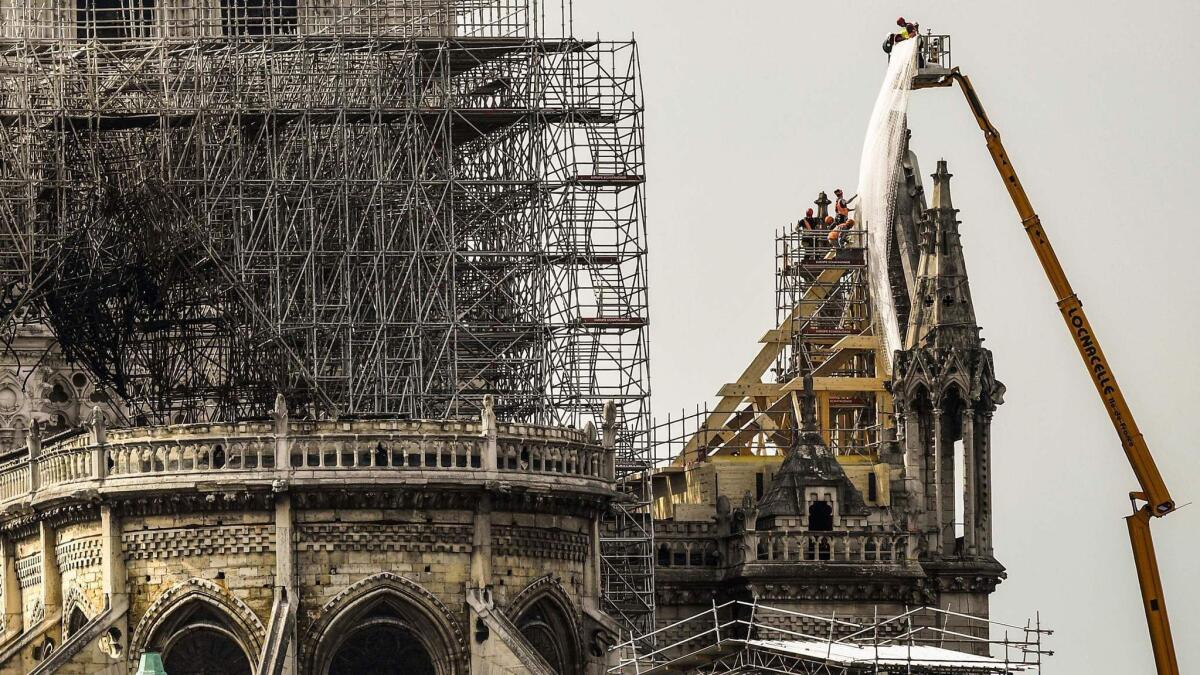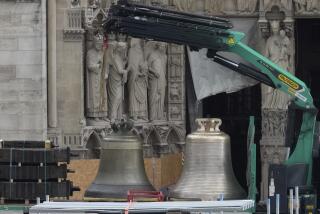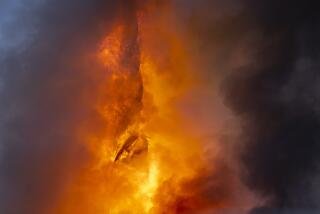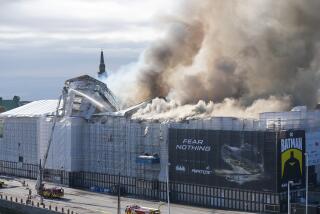Notre Dame fire was probably caused by electrical short circuit, police official says

Reporting from Paris — Paris police investigators think an electrical short circuit most likely caused the fire at Notre Dame Cathedral, a police official said Thursday as France paid a daylong tribute to the firefighters who saved the world-renowned landmark.
A French judicial police official said investigators made an initial assessment of the cathedral Wednesday but haven’t begun to search its charred interior because of unresolved safety hazards.
The official, who spoke on condition of anonymity because he wasn’t authorized to speak publicly about the investigation, said the cathedral’s fragile walls were being shored up with wooden planks.
Earlier in the afternoon, French President Emmanuel Macron presided over a ceremony at the Elysee Palace to thank the hundreds of firefighters who battled the fast-moving blaze for nine hours starting Monday evening. Authorities have said Notre Dame, which dates from the 12th century, was in danger of being completely consumed before fire crews stopped the blaze from spreading into a belfry.
Firefighters also rescued many of the important relics and works of art in the cathedral.
“We’ve seen before our eyes the right things perfectly organized in a few moments, with responsibility, courage, solidarity and a meticulous organization,” Macron said. “The worst has been avoided.”
Macron said the firefighters will receive an Honor Medal for their courage and devotion.
As the ceremony took place, investigators continued looking for clues to what sparked the fire. The huge cathedral, including the spire that was consumed by flames and collapsed, was in the initial stages of a lengthy restoration.
Investigators so far believe the fire was accidental and are questioning cathedral staff and employees working on the renovation. About 40 people had been questioned by Thursday, according the Paris prosecutor’s office.
Fire officials warned that the building remains unstable and extremely dangerous, including for the construction workers who rushed to secure an area above one of the rose-shaped windows and other vulnerable sections of the fire-damaged structure.
Workers using a crane were removing some statues to lessen the weight on the cathedral’s fragile gables, or support walls, and reduce the risk of their falling, because the section now lacks the support of the massive timber roof that burned.
Police, citing “important risks” of collapse and falling objects, officially closed Thursday a large swath of the island in the Seine River on which Notre Dame sits. The area had been unofficially blocked off since the fire.
Paris City Hall also was holding a ceremony in the firefighters’ honor Monday afternoon, with a Bach violin concert, two giant banners strung from the monumental city headquarters and readings from Victor Hugo’s “The Hunchback of Notre Dame.”
Remarkably, no one was killed in the fire, which began during a Mass, after firefighters and church officials speedily evacuated those inside.
Among the firefighters honored Thursday was Paris fire brigade chaplain Jean-Marc Fournier, who says he was falsely credited with helping salvage the crown of thorns believed by some to have been worn by Jesus at his crucifixion.
The chaplain said a team of rescuers broke the relic’s protective covering and an official who had the secret code to unlock the protection finished the job. Fournier told France Info on Thursday that his own team arrived on the heels of the salvaging and praised the action “to preserve this extraordinary relic, this patrimony of humanity.”
However, Fournier told the daily Le Parisian that he himself was able to save the most precious thing for Catholics from the fire: the cathedral’s consecrated hosts. The paper said he climbed on altars to remove large paintings, but that he felt especially proud of another personal salvaging operation: “to have removed Jesus” from the cathedral.
For Catholics, consecrated hosts are the body of Christ.
Among others honored was Myriam Chudzinski, one of the first firefighters to reach the roof as the blaze raged. Loaded with gear, she and her colleagues climbed hundreds of steps up the cathedral’s narrow spiral staircase to the top of one of the two towers. She had trained at the site for hours for just this moment.
“We knew that the roof was burning, but we didn’t really know the intensity,” she told reporters. “It was from upstairs that you understood that it was really dramatic. It was very hot and we had to retreat, retreat. It was spreading quickly.”
The building would have burned to the ground in a “chain-reaction collapse” had firefighters not moved as rapidly as they did to battle the blaze racing through the building, Jose Vaz de Matos, a fire expert with France’s Culture Ministry, said Wednesday.
An initial fire alert was sounded at 6:20 p.m., as a Mass was underway in the cathedral, but no fire was found. A second alarm went off at 6:43 p.m., and the blaze was discovered already consuming the roof.
Macron wants to rebuild the cathedral within five years — in time for the 2024 Summer Olympics that Paris is hosting — but experts say the vast scale of the work to be done could easily take 15 years, because it will take months, even years, just to figure out what should be done. Nearly $1 billion has been pledged for the cathedral’s restoration.
Benedicte Contamin, who came to view the damaged cathedral from afar Thursday, said she’s sad but grateful it’s still there.
“It’s a chance for France to bounce back, a chance to realize what unites us, because we have been too much divided over the past years,” she said.
More to Read
Sign up for Essential California
The most important California stories and recommendations in your inbox every morning.
You may occasionally receive promotional content from the Los Angeles Times.










